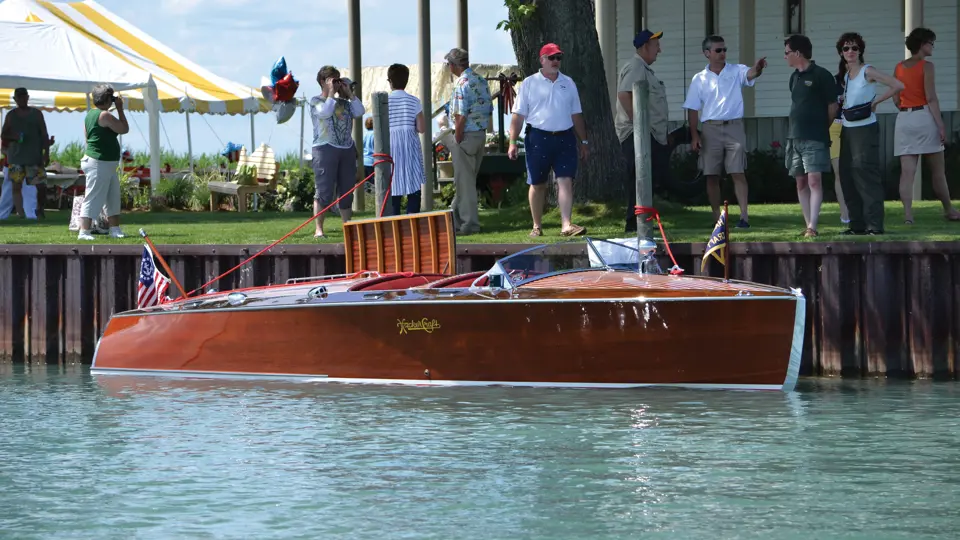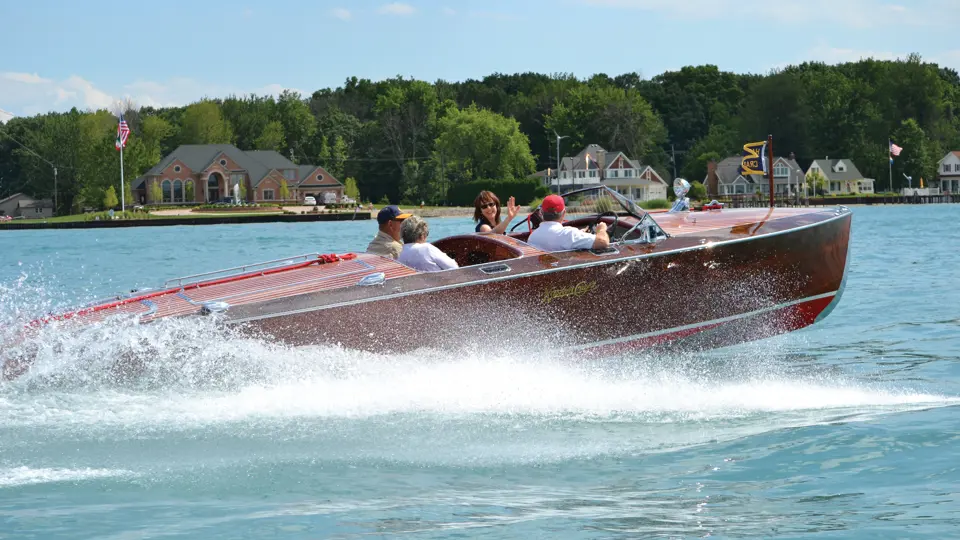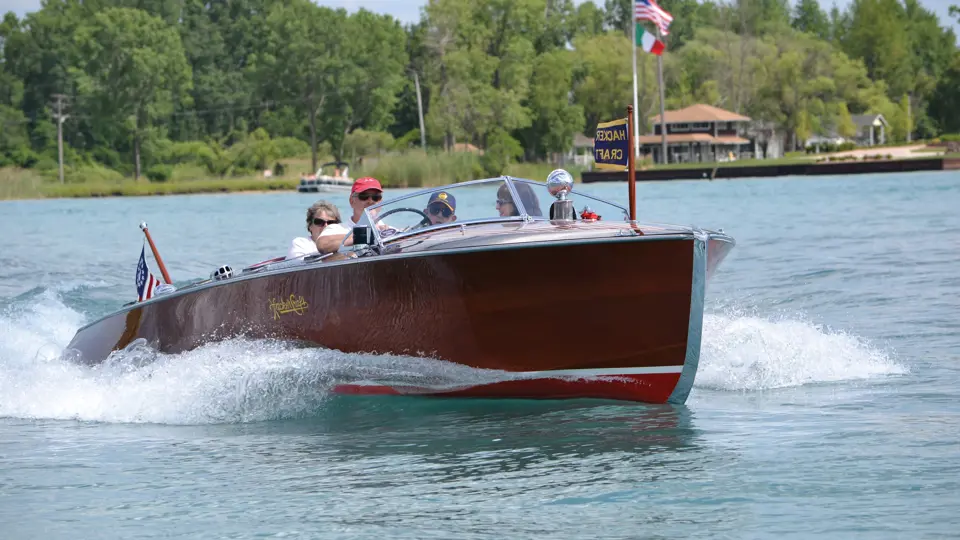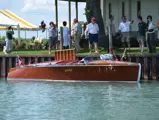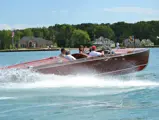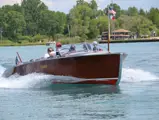
1938 Hacker-Craft 28' Twin Cockpit Runabout "Seaflow II"
{{lr.item.text}}
$375,000 - $425,000 USD | Not Sold
{{bidding.lot.reserveStatusFormatted}}
- One of only two examples known to exist
- Fully-restored; includes custom trailer
- Perfect for cruising the Great Lakes
- “Hacker-Craft, America’s Fastest Speed Boats”
Scripps V-12 engine. Length: 28 ft.
John Ludwig Hacker was one of the preeminent American naval architects of the 20th century. He was a prolific designer, beginning his career in the early 1900s. He was among the first designers to espouse the “planing” hull, realizing that, in order to go faster, the hull of the boat would have to ride on top of the water, not plow through it. In 1918, he designed six standard runabouts for the Belle Isle Boat and Engine Company—boats that became famous as “Belle Isle Bear Cats” and that launched Hacker to prominence. He established the Hacker Boat Company, and the Dolphin models, 22-foot and 26-foot, were among his first.
As the 1920s came to an end, America’s obsession with speed extended to all motorized vehicles: airplanes, automobiles, motorcycles, and speed boats. Records were set and broken, and faster hulls and bigger engines were the order of the day. Hacker-Craft boats were among the most coveted, and new models were introduced to great fanfare.
Hacker’s ads weren’t short of hyperbole: “Hacker-Craft are hand-built. ‘Skimping’ in materials and workmanship is never practiced in the Hacker shops to achieve lower prices. Price-cutting sins against quality—and quality is a paramount consideration in selecting a boat. You’ll discover that Hacker-Craft are not volume production boats. They are carefully and skillfully built from the finest materials known to the boat builders’ art. From their chromium plated cutwaters to their solid oak strut members every inch of a Hacker-Craft presents a sturdy picture of integrity and wholesome design. From their copper riveted (not screw fastened) double planked bottoms to their luxuriously comfortable genuine leather upholstering Hacker-Craft guarantee enduring quality and greater owner satisfaction. A Hacker-Craft is never expensive by comparison.”
While the Great Depression took a terrible toll on boat builders in general, John Hacker was a much better naval architect than he was a businessman, and by 1935, his partners accepted the surrender of his stock in the company “in payment of his indebtedness to the company.” Hacker was allowed to accept outside design commissions, but only for boats of non-competing size or style. The Hacker Boat Company soldiered on, and by 1937, the economic climate had improved enough that a new sales manager was hired away from General Motors. Total production numbers for the late 1930s are lost, but it is assumed that they built 200 to 300 boats of all sizes each year.
This Twin Cockpit Runabout is one of only two 1938 28-foot Hacker-Crafts known to exist today. Seaflow II was built in 1938 for a Mr. Sibley, of Detroit, Michigan, and features a unique Hacker design element: the “rumble seat” aft cockpit with a folding hatch cover that serves as the aft seat back when open. In 1948, this vessel was purchased by Stan Sayres, of Seattle, Washington, a well-known automobile dealer and early impresario of Gold Cup Hydroplane racing. From 1950 to 1956, Seaflow II served as the chase and tow boat for Slo Mo Shun IV & V, which were the prototypes of modern racing hydroplanes and world-record holders. She also served as the Sayres family boat, frequently seen on Lake Washington.
It is one of only two known surviving examples, and Sea Flow II has been fully restored, including its Scripps V-12 engine. Additionally, the custom triple-axle trailer is also included in the sale. This runabout has been fully prepared and vetted for return to the water, and it would make an exceptional summertime cruiser for the whole family.

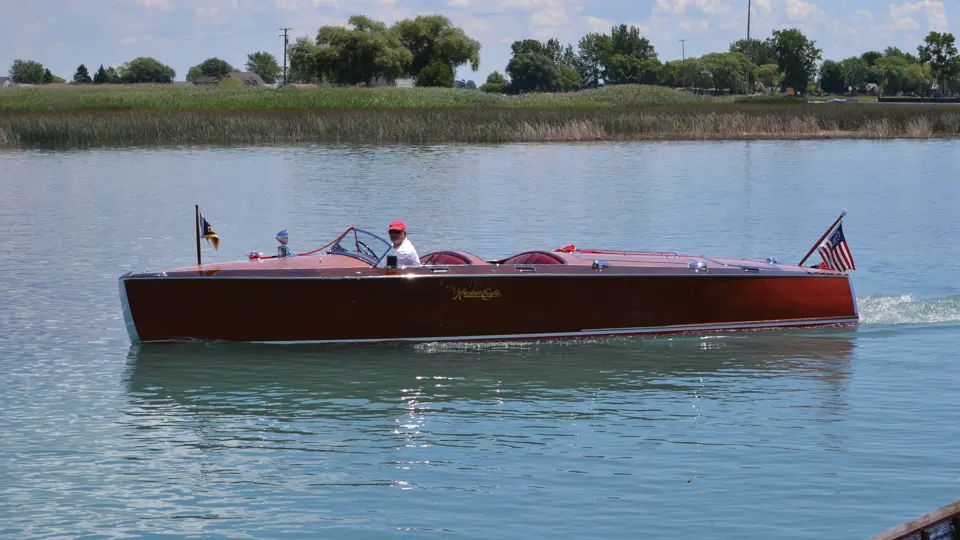



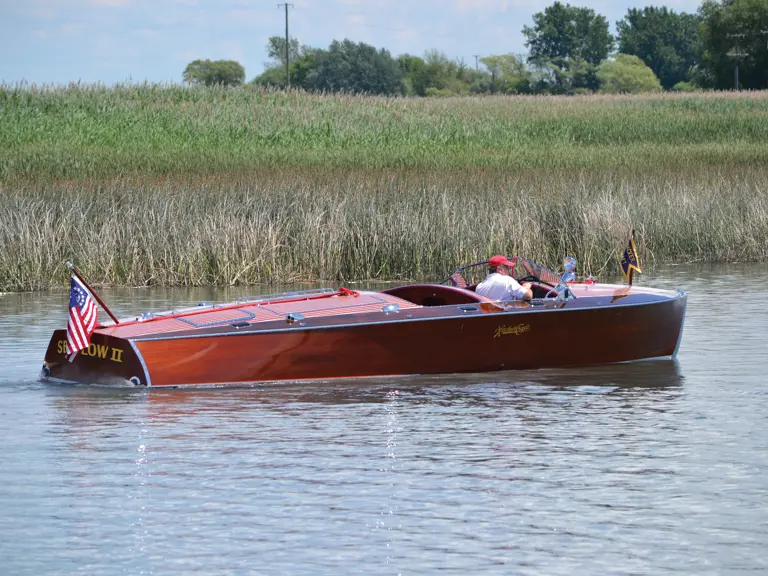
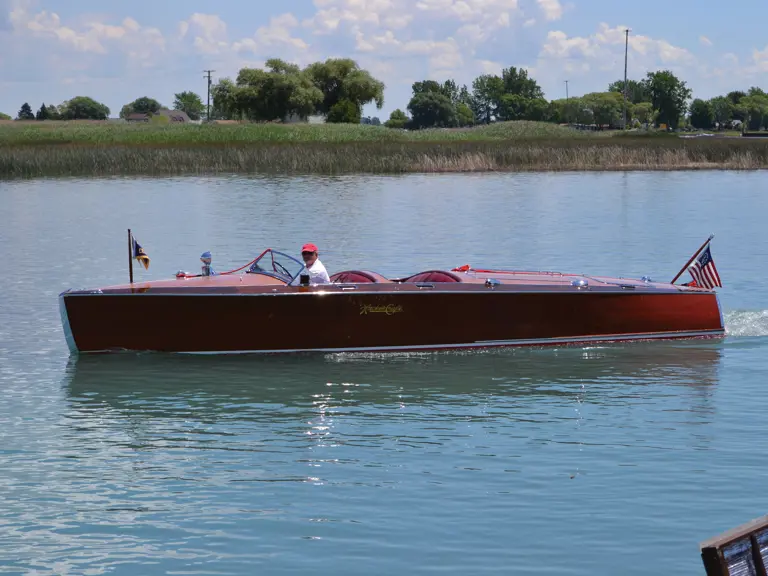


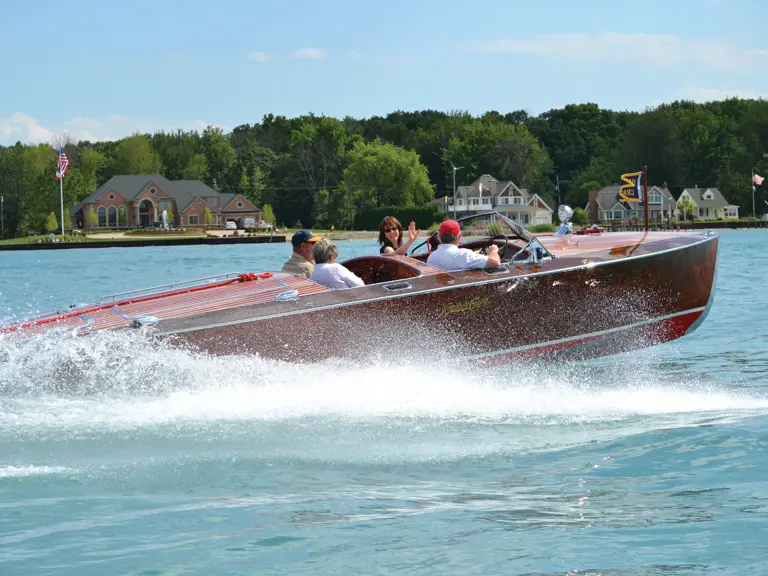
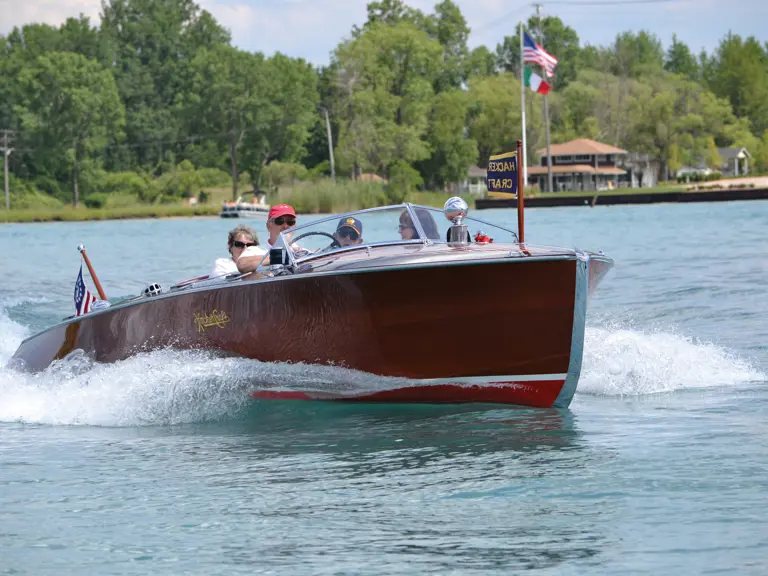
 | Plymouth, Michigan
| Plymouth, Michigan
